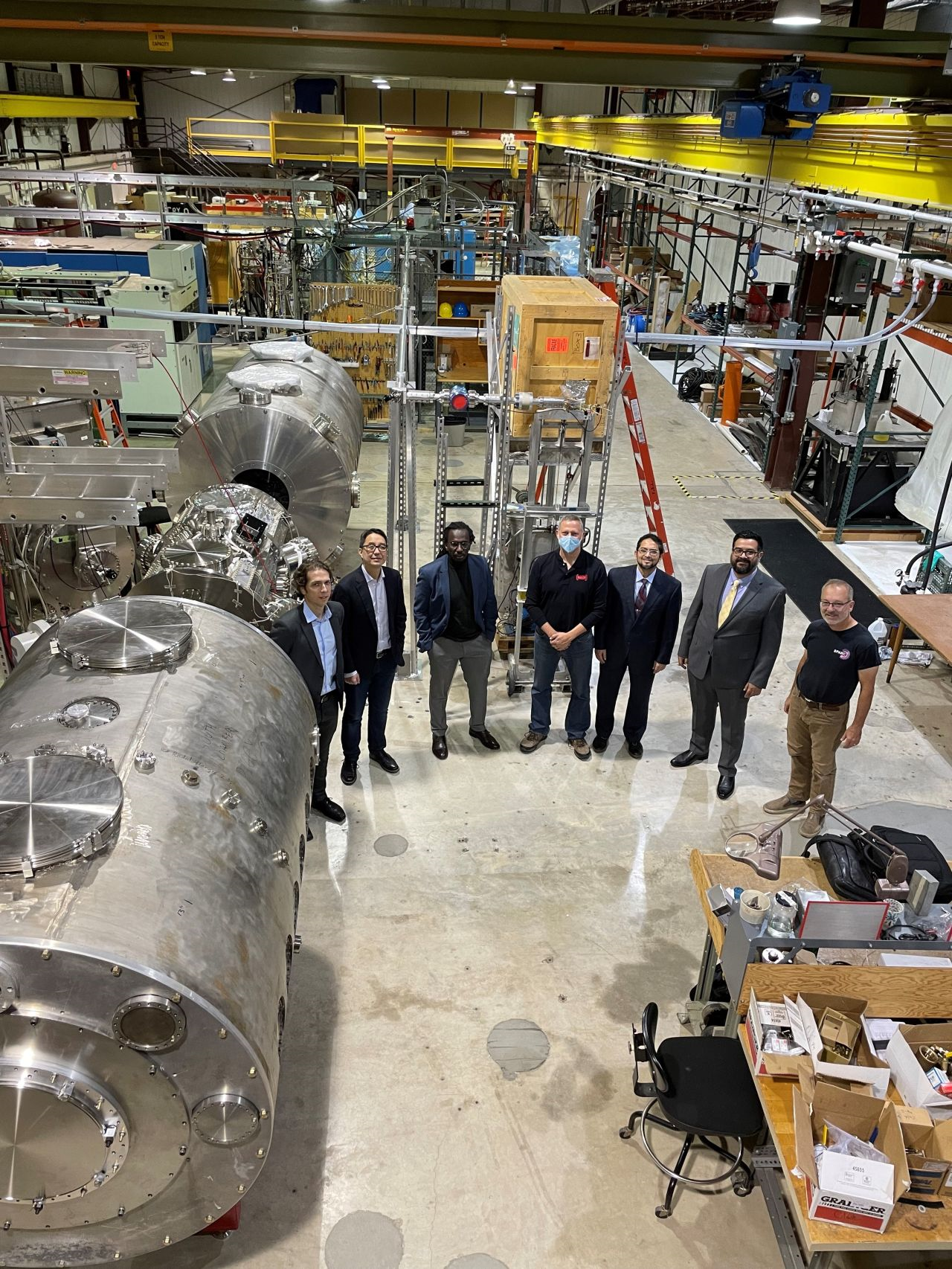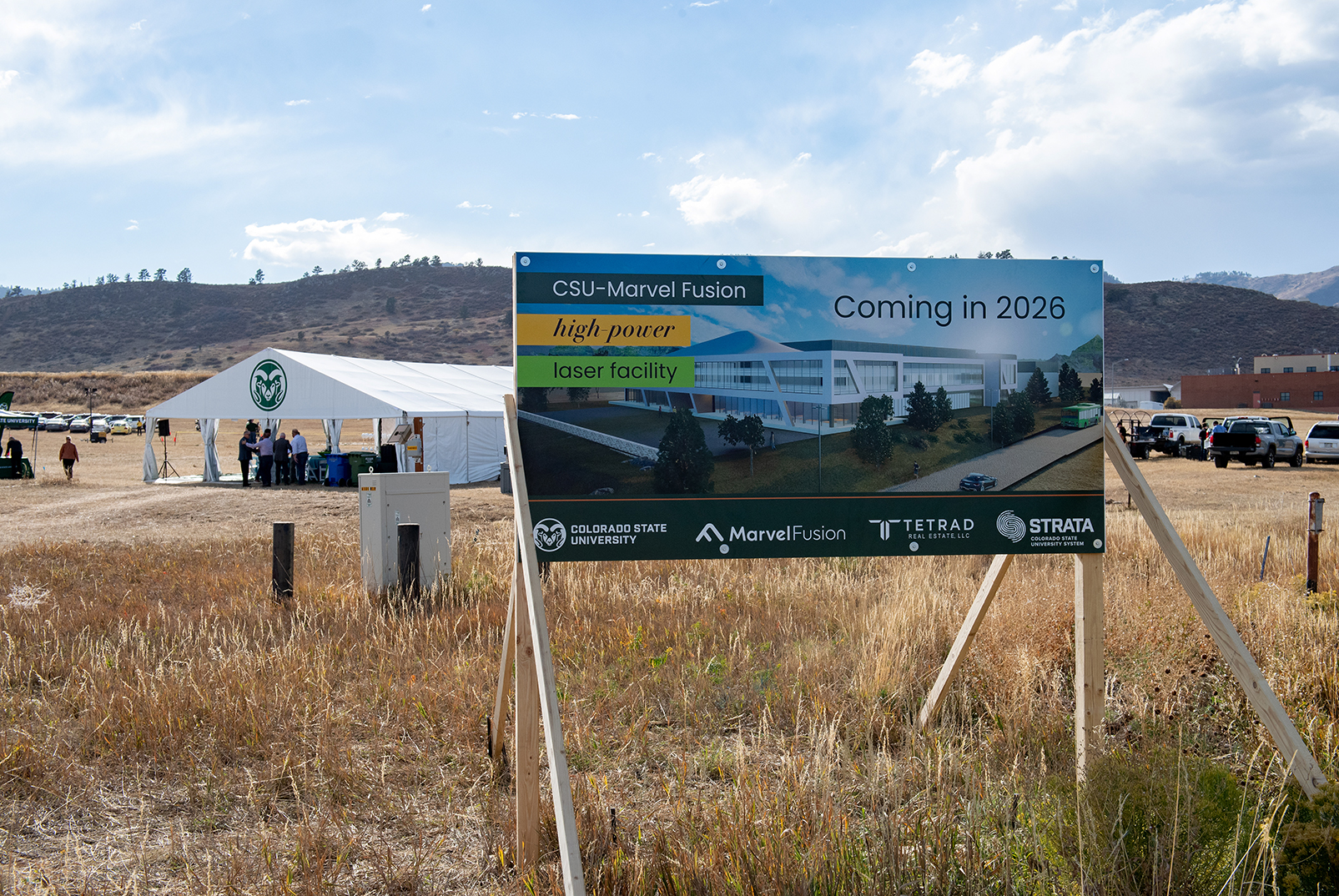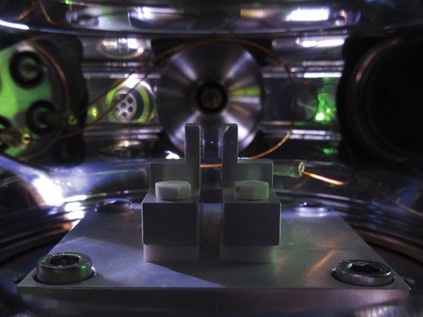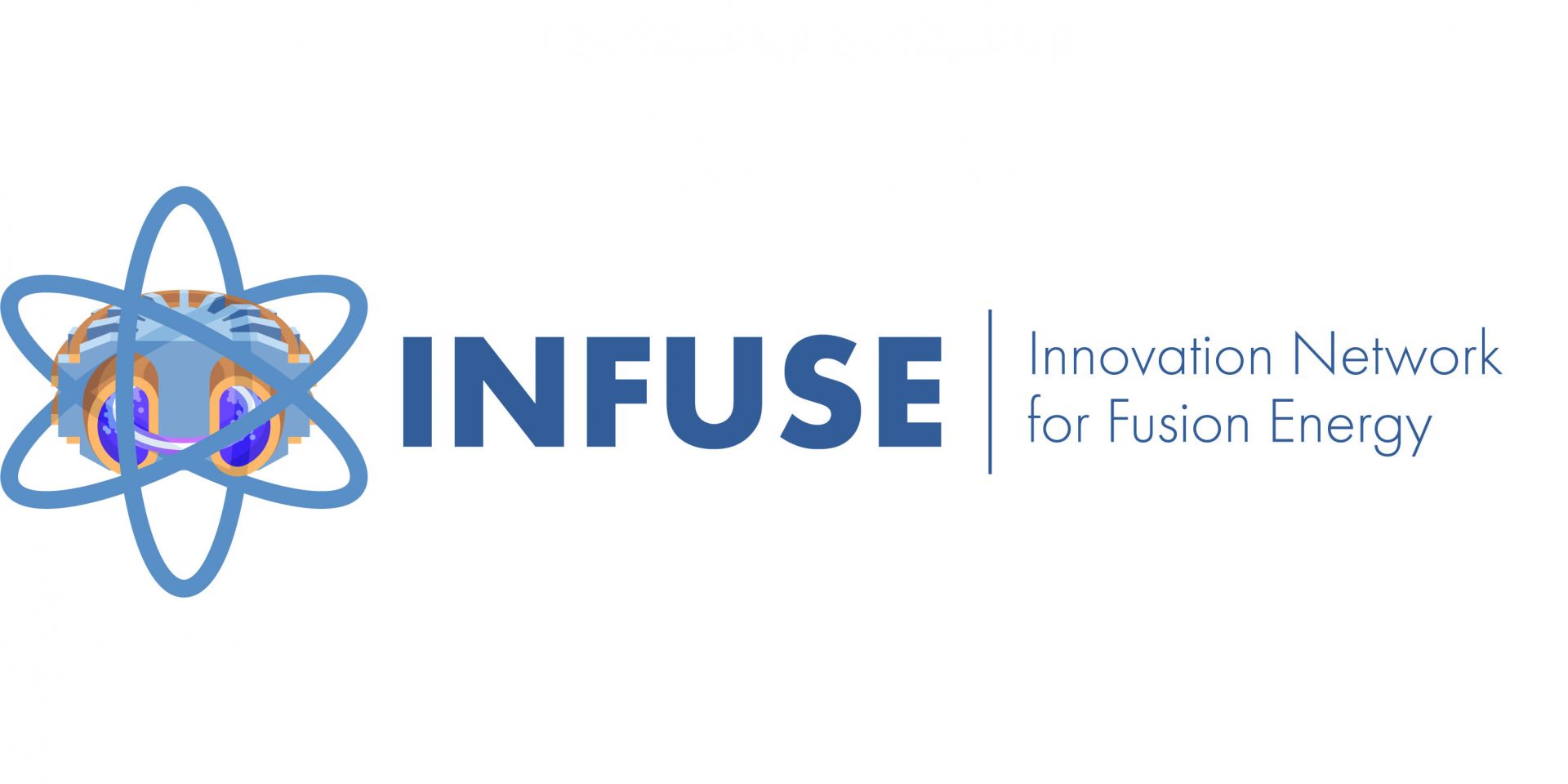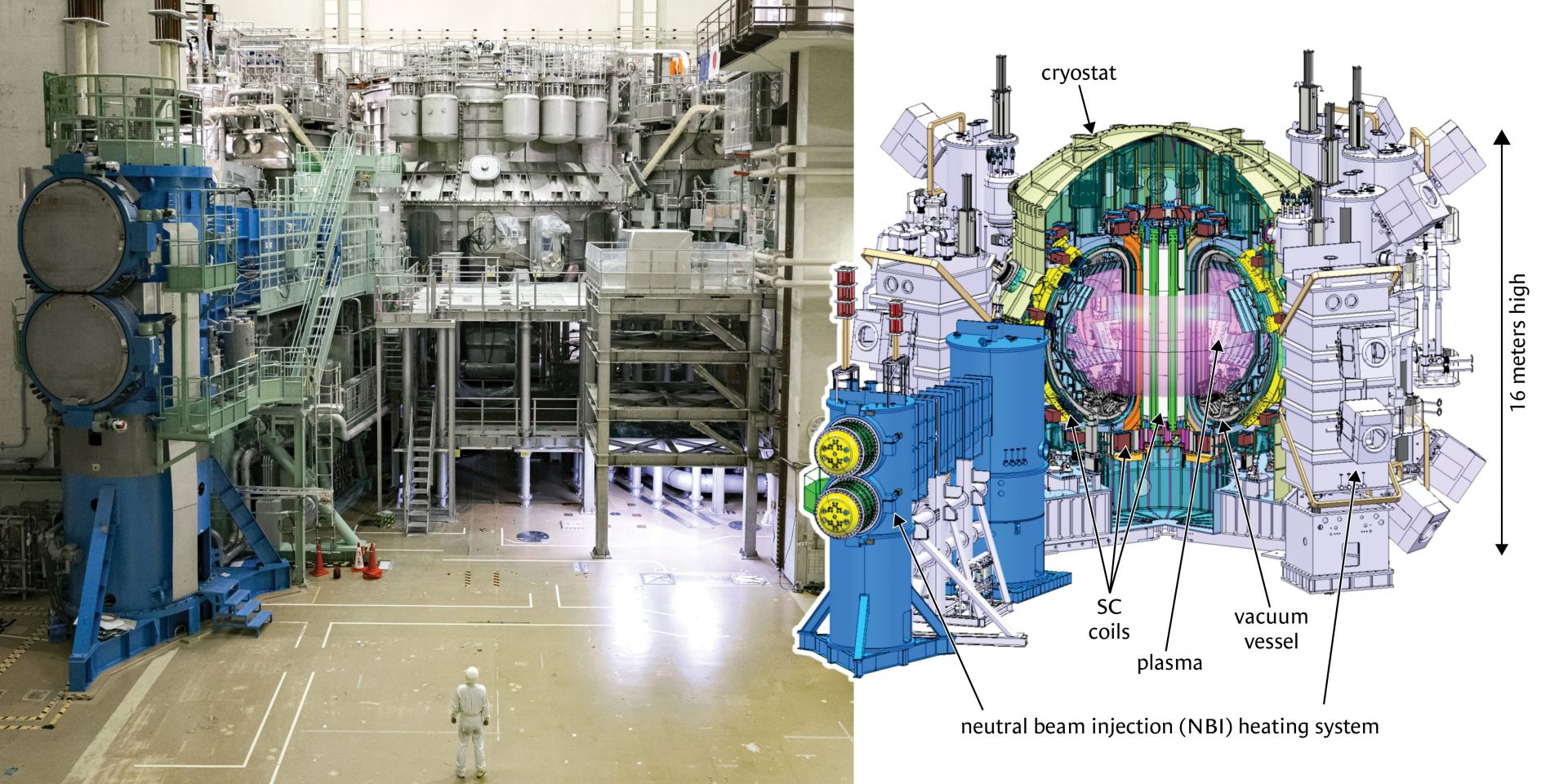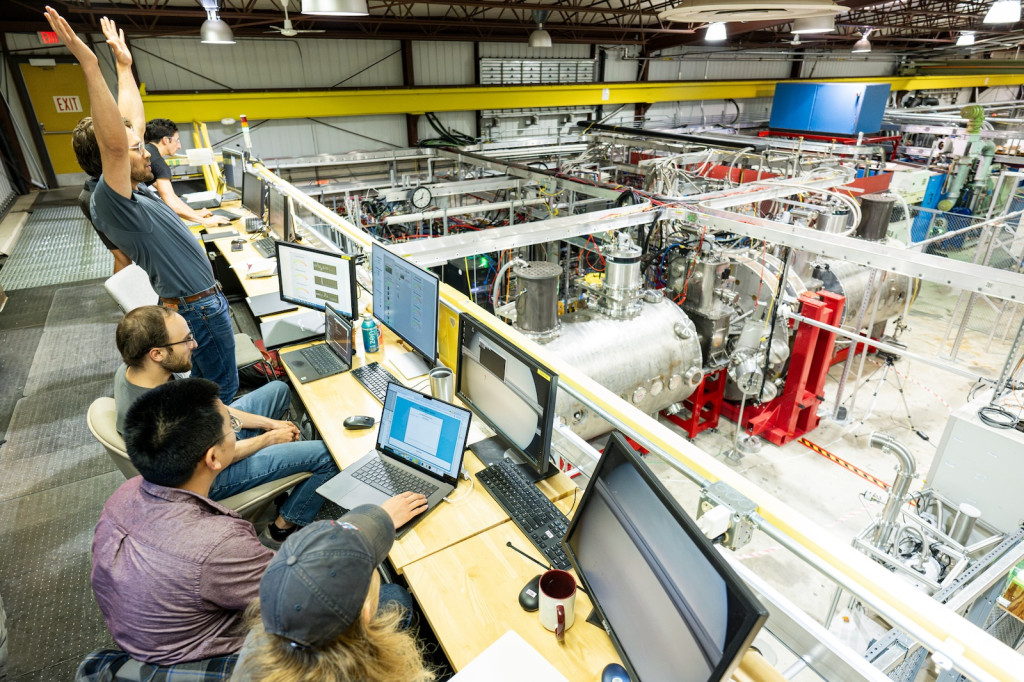A rendering of Commonwealth Fusion Systems planned ARC power plant. (Image: CFS)
Commonwealth Fusion Systems (CFS) has announced that it plans to build a fusion power plant, named ARC, at the James River Industrial Park in Chesterfield County, Va.—and that it expects to be the first company to make fusion power available at grid scale.
The Acceleron Fusion team at the High Intensity Proton Accelerator facility at the Paul Scherrer Institute in September 2024. (Photo: Acceleron Fusion)
Cambridge, Mass.–based fusion startup Acceleron Fusion announced that it has closed a $24 million Series A funding round co-led by Lowercarbon Capital and Collaborative Fund. According to Acceleron, the funding will fuel the company’s efforts to advance its low-temperature muon-catalyzed fusion technology.
Tokamak Energy’s ST40. (Photo: Tokamak Energy)
Tokamak Energy’s ST40 experimental fusion facility will receive a $52 million upgrade under a joint public-private effort with the U.S. Department of Energy and the U.K. Department of Energy Security and Net Zero (DESNZ) aimed at advancing the fusion science and technology needed to deliver a future pilot plant.
The Realta Fusion and ARPA-E team at the WHAM facilities in 2023. (Photo: DOE/ARPA-E)
TitletownTech, a venture capital firm formed out of a partnership between Microsoft and the Green Bay Packers, has invested in Realta Fusion, a private fusion startup company that was spun out of an ARPA-E-funded fusion project at the University of Wisconsin–Madison in 2022. Realta is developing modular, compact, magnetic mirror fusion energy generators as an economic, zero-carbon solution to power AI-driven infrastructure and other industrial applications. TitletownTech did not disclose the details of its investment.
Chapman (left) and Methven at the West Burton power station. (Photo: UKIFS)
Leadership of the United Kingdom’s STEP (Spherical Tokamak for Energy Production) fusion program has transitioned to U.K. Industrial Fusion Solutions Ltd. (UKIFS), a wholly owned subsidiary of the U.K. Atomic Energy Authority (UKAEA). UKIFS was established in February 2023 to lead a public-private partnership that will design, build, and operate the STEP prototype fusion energy plant in Nottinghamshire in England’s East Midlands region.
Colorado State University hosted a ground-breaking event for a new laser research facility being built in partnership with Marvel Fusion at the university’s Foothills Campus. (Image: CSU)
In the foothills of the Rocky Mountains on the outskirts of Fort Collins, Colo.—home to Colorado State University—work began this month on a new laser facility funded by a public-private partnership. The private portion is $150 million from Marvel Fusion, announced in August 2023, while $12.5 million—the latest funding for CSU from the Department of Energy’s Office of Fusion Energy Sciences (FES)—will support the new facility as part of LaserNetUS, a laser research network operated by DOE-FES to provide access to laser facilities for multidisciplinary researchers from the United States and abroad.
A still shot from the Senate ENR Hearing to Examine Fusion Energy Technology Development.
Hours before the Senate Committee on Environment and Natural Resources (ENR) opened a scheduled September 19 hearing on fusion energy technology development, CNN published an article titled “The US led on nuclear fusion for decades. Now China is in a position to win the race.” The article was entered into the hearing record, but senators had already gotten the message.
An optically trapped microparticle in high vacuum is visible as a white dot levitated between two lenses, which are used to focus and collect invisible infrared laser light used to trap the particle. (Photo: DOE/Yale Wright Lab)
Start talking about dust in a vacuum, and some people will think of household chores. But dust has featured in recent nuclear science and engineering headlines in curious ways: ITER is deploying oversized dust covers inspired by space satellites in the south of France, while at Yale University, researchers have watched every move of a dust-sized particle levitating in a laser beam for telltale twitches that indicate radioactive decay.
Members of the Metrology Research and Development team working with the 4Pi system in a clean room at GA headquarters. (Photo: General Atomics)
The National Ignition Facility (NIF) at Lawrence Livermore National Laboratory has achieved fusion ignition at least five times, each time by directing its 192 high-powered lasers on a capsule containing a tiny, 2-millimeter target filled with hydrogen fuel. Not every shot achieves ignition, however. Tiny imperfections in the targets can mean fizzle, not fusion. But each of the targets used in successful experiments to date have something in common: they were characterized and selected by the 4Pi Integrated Metrology System, a new measurement system developed by General Atomics. Now, the team behind that system is being recognized.
GA announced last week that its Metrology Research and Development team had won the 2024 "Team of the Year" R&D 100 Professional Award from R&D World. The magazine that each year announces the R&D 100 awards that have been dubbed the “Oscars of Innovation” also selects just one “Team of the Year” and announces that award together with four other professional awards.
Fig. 1. A photograph (left) and schematic figure (right) of JT-60SA.
(Source: Naka Institute)
JT-60SA (Japan Torus-60 Super Advanced) is the world’s largest superconducting tokamak device. Its goal is the earlier realization of fusion energy (see Fig. 1). Fusion is the energy that powers the Sun, and just 1 gram of deuterium-tritium (D-T) fuel produces enormous energy—the equivalent of 8 tons of crude oil.
Last fall, the JT-60SA project announced an important milestone: the achievement of the tokamak’s first plasma. This article describes the objectives of the JT-60SA project, achievements in the operation campaign for the first plasma, and next steps.
A screengrab from a video released by the STEP program on July 23 illustrating the future home of the prototype fusion power plant. (Image: UKAEA/STEP)
Japan’s recent moves to boost fusion power in the nation’s energy plan and accelerate the timeline for a prototype fusion power plant come in response to increased global attention on fusion energy. Even as ITER faces delays, more than 40 private fusion developers are pursuing different technologies and competing for attention. And so are other countries, including the United Kingdom, which announced its plans for a fusion pilot plant back in 2019. Fusion companies and nations alike are responding to a growing sense that there is a race—or at least collective momentum—to commercialize fusion energy.
Elliot Claveau, honorary fellow in the UW–Madison Department of Physics and experimental scientist at Realta Fusion, raises his arms in celebration of achieving a plasma in WHAM at the Wisconsin Plasma Physics Laboratory. The device is seen on the floor of the lab. (Photo: Bryce Richter/UW–Madison)
The magnetic mirror fusion concept dates to the early 1950s, but decades ago it was sidelined by technical difficulties and researchers turned to tokamak fusion in their quest for confinement. Now it’s getting another look—with significantly more powerful technology—through WHAM, the Wisconsin HTS Axisymmetric Mirror, an experiment in partnership between startup Realta Fusion and the University of Wisconsin–Madison.
July 19, 2024, 3:06PMNuclear NewsBenny Evangelista and Charlie Osolin Concept art showing an IFE power plant of the future. (Image: Eric Smith/LLNL)
It was a laser shot for the ages. By achieving fusion ignition on December 5, 2022, Lawrence Livermore National Laboratory proved that recreating the “fire” that fuels the sun and the stars inside a laboratory on Earth was indeed scientifically possible.





